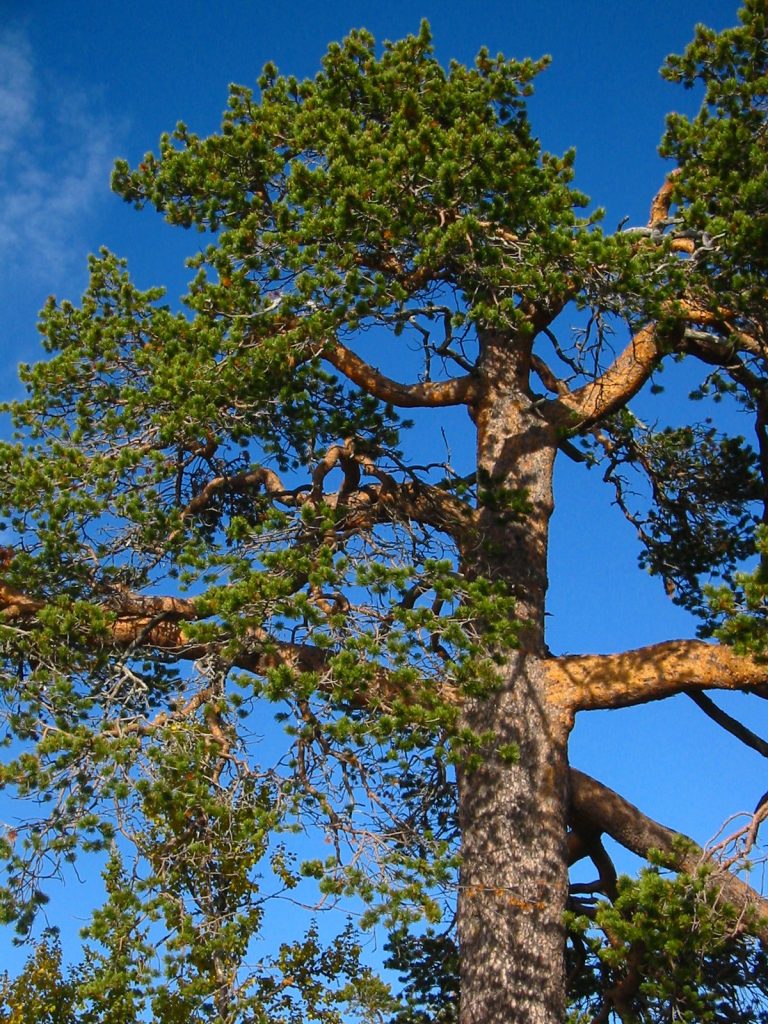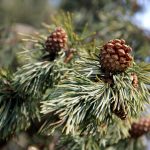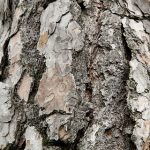Scots Pine: Pinus sylvestris

A Scots Pine tree

Scots Pine needles and cones

Scots Pine bark
Identification
- Needles in bundles of two, usually with a blue-green color
- Waxy needles usually between 2-3 inches long
- Bark is reddish-brown and forms flaky plates.
- Cones have wings at the end of their scales
- Trunk is often extensively forked
- Scaly, bright orange-red bark, often seen on the upper trunk and branches
Status
- Non-Native
Interesting Facts
- The timber, though classified as ‘softwood’, is strong and used for a huge range of products, from house and boat-building to furniture, toys and railway sleepers
- This tree can grow as high as 40 metres! (tallest ever was in Ohio at 45 meters high)
- This tree is very tolerant of soil conditions, moisture and extremes of weather
- Often used as Christmas trees- maybe you have had a scots pine in your own home!
References
Scots pine videos, photos and facts. (2011, March). Arkive. Retrieved April, 2017, from http://www.arkive.org/scots-pine/pinus-sylvestris/
Yazdani, R., Lindgren, D., & Rudin, D. (1985). Gene Dispersion and Selfing Frequency in a Seed-Tree Stand of Pinus Sylvestris (L.). Population Genetics in Forestry Lecture Notes in Biomathematics, 139-154. https://link.springer.com/chapter/10.1007/978-3-642-48125-3_10
Farrar, J. F., Relton, J., & Rutter, A. J. (1977). Sulphur Dioxide and the Growth of Pinus sylvestris. The Journal of Applied Ecology, 14(3), 861. https://www.jstor.org/stable/2402817?seq=1#page_scan_tab_contents
Image Credits
A Scots Pine tree: "Arjeplog" by Mroszewski is licensed under CC BY-SA 3.0
Scots Pine needles and cones: "Pinus sylvestris" By Joan Simon is licensed under CC BY-SA 2.0. Image cropped. Cropped image licensed under CC BY-SA 4.0.
Scots Pine bark:"Bach und Schluchtwald" by Derzno is licensed under CC BY-SA 3.0 Image cropped. Cropped image licensed under CC BY-SA 4.0.